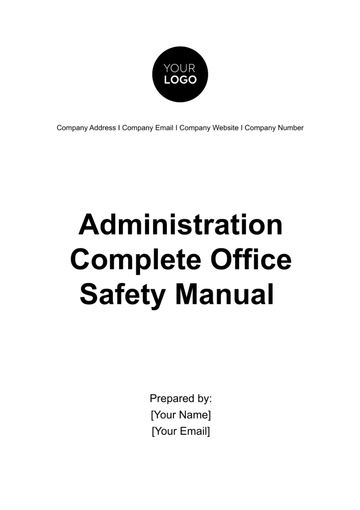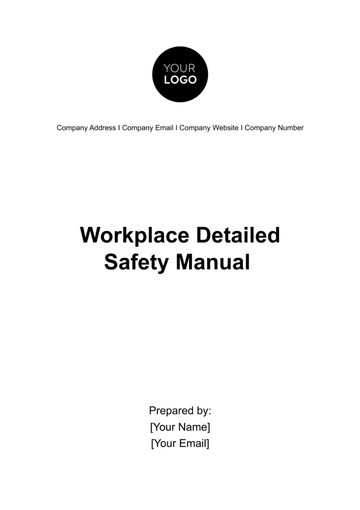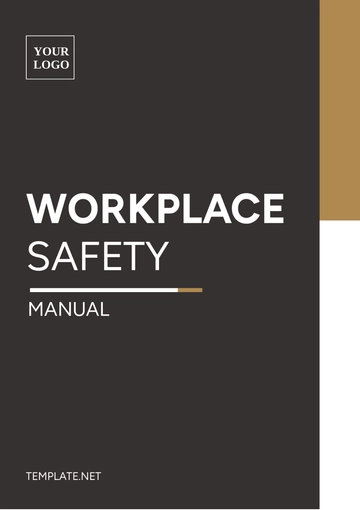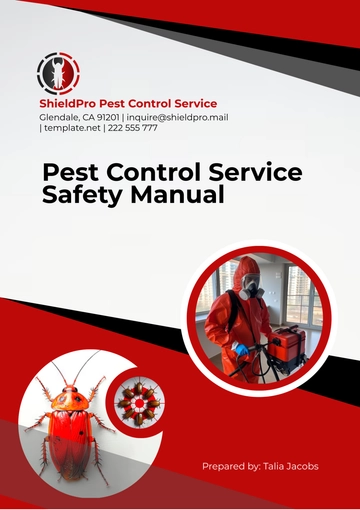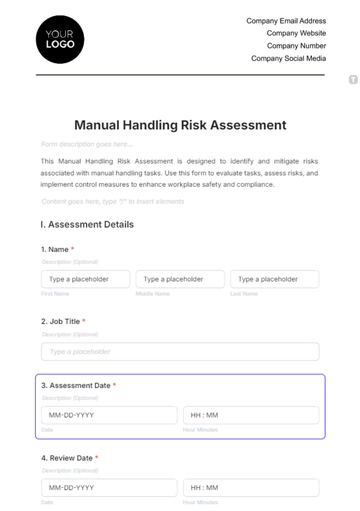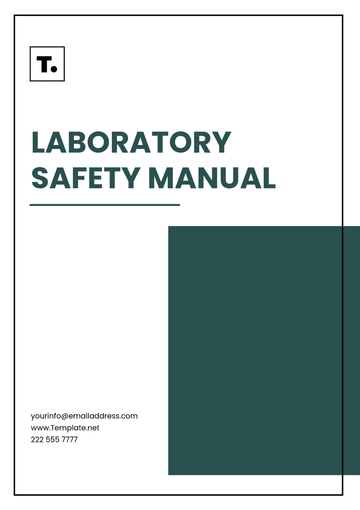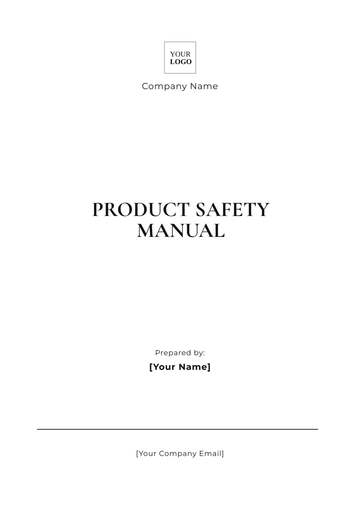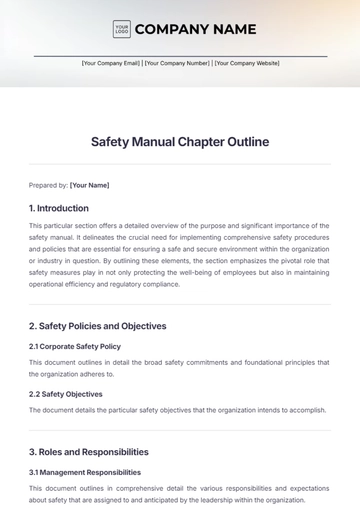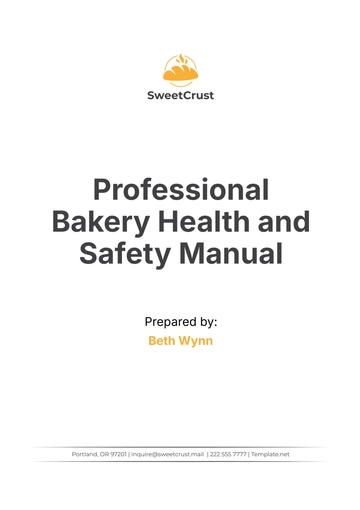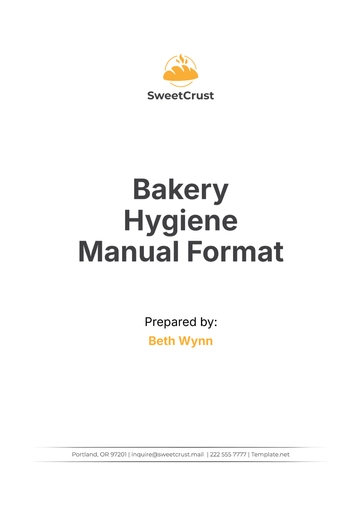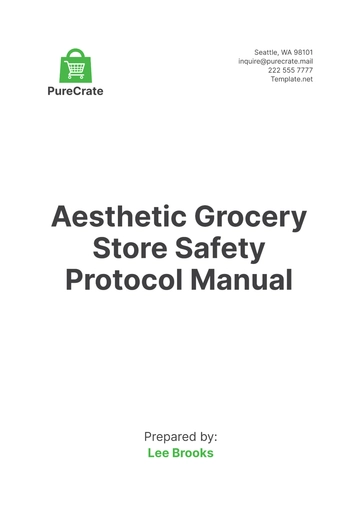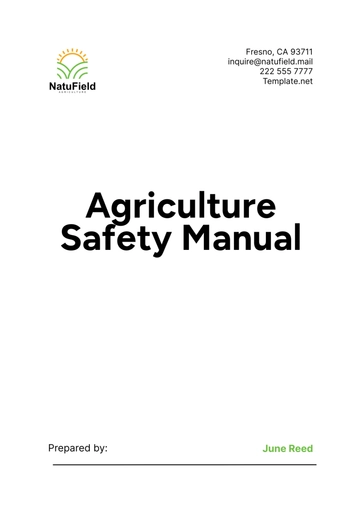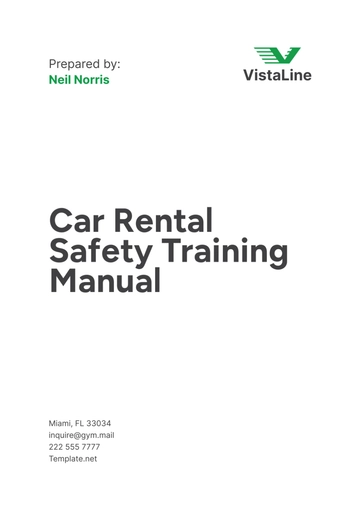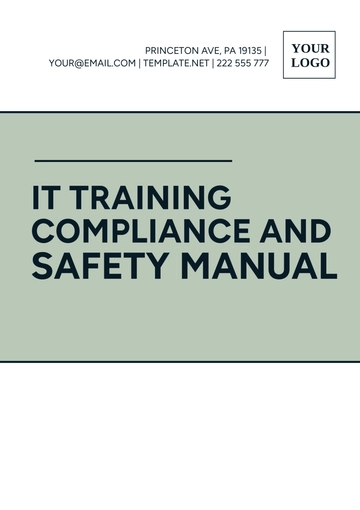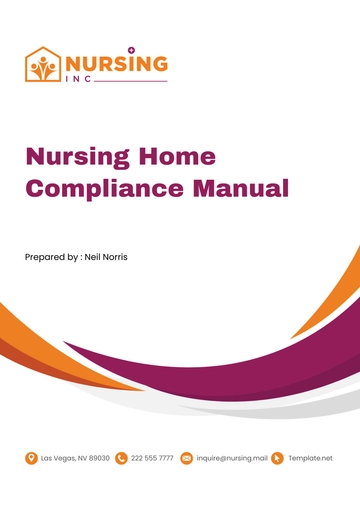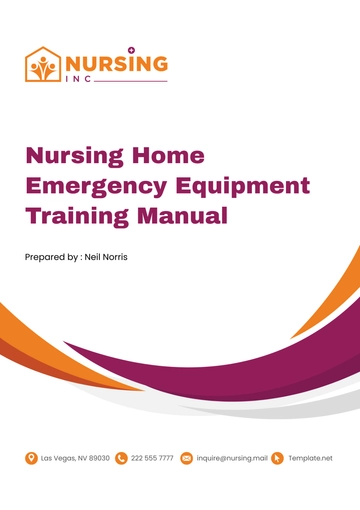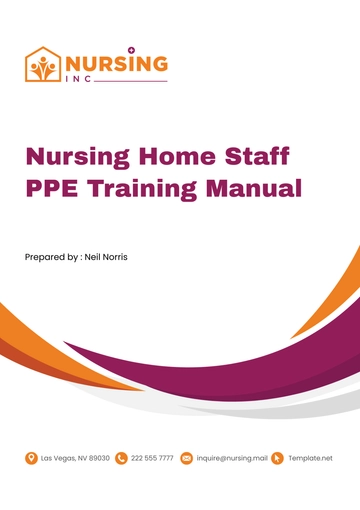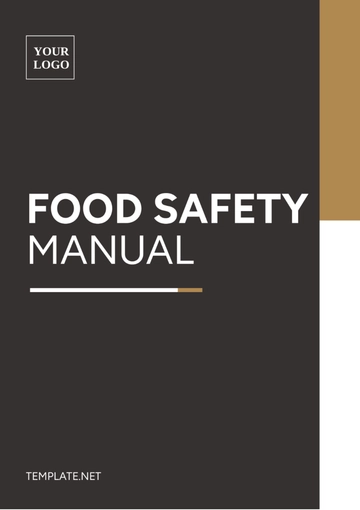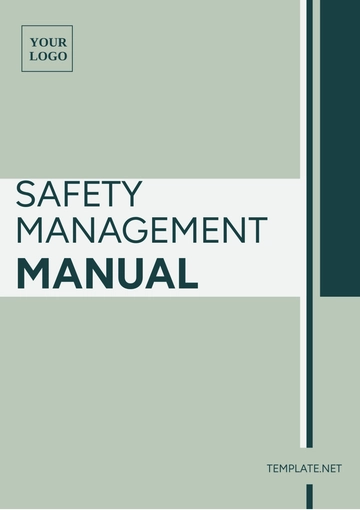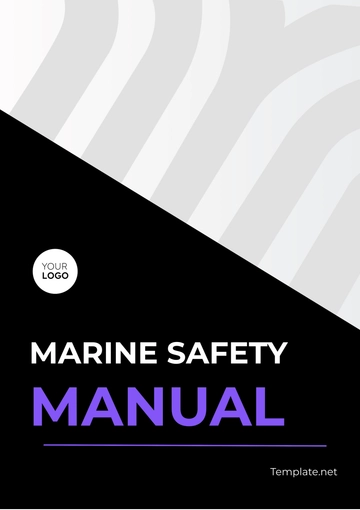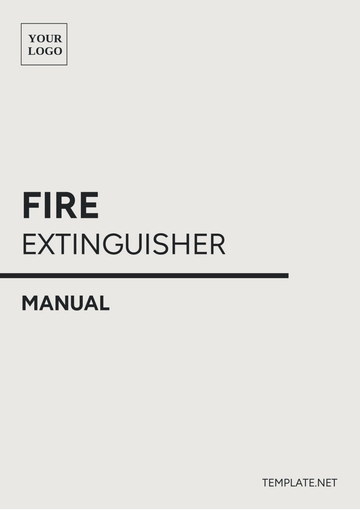Free Safety Inspection Manual
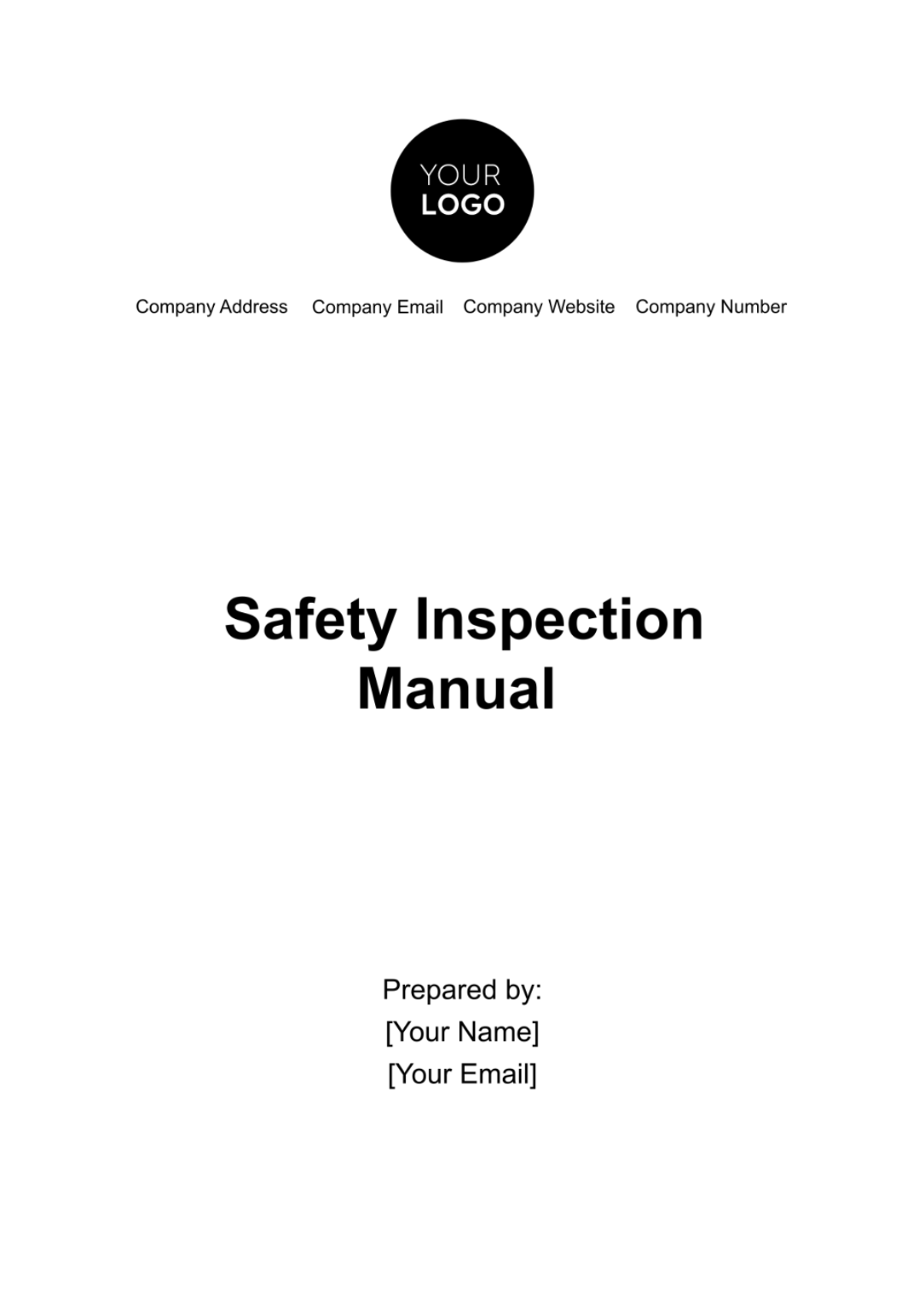
1. Introduction
This manual is designed as a guide for conducting effective safety compliance audits and inspections within various workplace environments. Its purpose is to ensure that all operational aspects of an organization align with the latest health and safety regulations. This proactive approach is geared towards identifying potential risks, enforcing safety standards, and implementing corrective actions to maintain and enhance a safe working environment.
Scope of Audits and Inspections
The scope of this manual covers a wide range of areas including, but not limited to:
Workplace environment assessments.
Equipment and machinery safety.
Employee safety training and awareness.
Emergency response preparedness and procedures.
Documentation and compliance with legal safety standards.
This manual is intended for use by safety officers, audit teams, management staff, and all personnel involved in safety compliance and workplace health management. It acts as a bridge between regulatory requirements and practical, on-ground application, ensuring a holistic approach to workplace safety.
2. Pre-Inspection Procedures
Planning and Preparation
Identifying Areas for Inspection:
Area | Safety Aspects to Inspect |
Manufacturing Floor | Equipment safety, worker PPE compliance |
Warehouse | Storage practices, fire safety |
Office Spaces | Ergonomics, electrical safety |
Outdoor Areas | Signage, walkway conditions |
Gathering Necessary Tools and Equipment:
Equipment/Tool | Purpose |
Safety Checklist | To ensure all inspection points are covered |
Measurement Instruments | To measure noise levels, air quality, etc. |
Camera | For documenting visual evidence |
Personal Protective Equipment | For inspector safety during the audit |
Team Formation
Roles and Responsibilities:
Role | Responsibilities |
Lead Inspector | Overall coordination, final reporting |
Safety Officer | Identifying hazards, suggesting improvements |
Documentation Specialist | Maintaining records, capturing details |
Technical Expert | Assessing technical aspects of equipment |
Inspection Protocols
Safety Standards and Regulations
The inspection will adhere to the following safety standards and regulations:
OSHA (Occupational Safety and Health Administration) guidelines for workplace safety.
ISO 45001 for occupational health and safety management systems.
Local fire safety and building codes for structural and fire safety compliance.
Inspection Process
Conducting Walkthroughs:
1. Initial Briefing: Team meets to review the areas of inspection and specific focus points.
2. Physical Walkthrough: The team walks through each designated area, observing and noting any visible safety issues.
3. Equipment and Machinery Inspection: Special attention given to the operational safety of machinery and equipment.
4. Employee Interactions: Engaging with employees to understand their awareness and concerns related to safety.
Assessment Criteria:
Safety Aspect | Criteria for Assessment |
Equipment Safety | Condition, maintenance records, safety guards |
Employee Training | Training records, knowledge assessment |
Fire Safety | Extinguishers, alarms, evacuation routes |
Hazardous Material Storage | Proper labeling, storage, handling |
Each of these areas and criteria will be rated on a scale from 'Excellent' to 'Poor', with recommendations for improvement provided for any ratings below 'Good'.
4. Risk Assessment and Management
Identifying Hazards
The process of hazard identification involves recognizing elements in the workplace that could potentially cause harm. This section categorizes various types of hazards:
Type of Hazard | Description | Examples |
Physical | Hazards that can cause bodily harm | Slippery floors, unguarded machinery |
Chemical | Substances that can cause harm | Toxic fumes, corrosive liquids |
Biological | From living organisms | Bacteria, viruses, mold |
Ergonomic | Related to workplace setup | Improper seating, repetitive strain |
Psychosocial | Affecting mental health | Work stress, harassment |
Evaluating Risks
The evaluation of risks involves assessing the potential harm that these hazards can cause, considering both the likelihood of occurrence and the severity of consequences.
Risk Evaluation Matrix:
Likelihood/Severity | Low | Moderate | High |
Very Likely | Moderate Risk | High Risk | Very High Risk |
Possible | Low Risk | Moderate Risk | High Risk |
Unlikely | Low Risk | Low Risk | Moderate Risk |
For instance, a 'Very Likely' occurrence of a 'Moderate' severity hazard is considered a 'High Risk'. This matrix assists in prioritizing which hazards require immediate attention.
Mitigation Strategies
Once risks are identified and evaluated, appropriate mitigation strategies are to be formulated:
Hazard Type | Mitigation Strategy |
Physical | Implement safety guards, improve lighting |
Chemical | Provide proper PPE, ensure good ventilation |
Biological | Regular cleaning, provide hygiene facilities |
Ergonomic | Ergonomic assessments, provide adjustable furniture |
Psychosocial | Stress management programs, promote a positive work culture |
Monitoring and Review
Continuous monitoring of the implemented strategies is crucial for ensuring their effectiveness. This includes regular review meetings, feedback sessions with employees, and updating the risk assessment.
5. Compliance Verification
Documentation Review
A thorough review of the following documents is essential for verifying compliance with safety standards:
Document Type | Purpose of Review |
Training Records | To confirm that all employees have received appropriate safety training |
Maintenance Logs | To ensure equipment and machinery are regularly and properly maintained |
Incident Reports | To review past incidents for patterns or unaddressed issues |
Safety Meeting Minutes | To verify ongoing safety discussions and action plans |
Employee Training and Awareness
Training Programs:
Onboarding Safety Training: Ensuring all new employees are trained in workplace safety practices.
Periodic Refresher Courses: Regular updates to existing employees on safety protocols and new regulations.
Specialized Training for High-Risk Areas: Tailored training for employees working in areas with higher safety risks.
Awareness Strategies:
Monthly Safety Bulletins: Distributing informational bulletins to keep safety in the forefront of employees’ minds.
Safety Boards: Establishing boards in common areas displaying safety tips, recent changes in protocols, and emergency contact information.
Regular Safety Drills: Conducting drills such as fire evacuation or emergency response exercises.
6. Reporting and Documentation
Inspection Report Format
An effective inspection report should be structured as follows:
1. Executive Summary: Brief overview of the inspection findings.
2. Detailed Findings: Specific details on each area inspected, including compliance status and observations.
3. Photographic Evidence: Including photos taken during the inspection to visually support findings.
4. Risk Assessment: Summary of the risk assessment results.
5. Recommendations: Suggested actions for addressing any non-compliances or risks identified.
6. Conclusion: Final thoughts and overall assessment of workplace safety.
Follow-up Procedures
Corrective Action Plan:
Non-compliance Issue | Recommended Action | Timeline for Completion |
Inadequate Emergency Exits | Install additional exits or signage | [60 days] |
Outdated First Aid Kits | Replace and restock all first aid kits | [30 days] |
Poor Lighting in Warehouse | Install additional lighting fixtures | [90 days] |
Record Keeping:
Maintaining a digital archive of all safety inspection reports and follow-up actions.
Keeping a log of all safety training sessions, attendees, and feedback received.
Recording updates or changes to safety policies and procedures.
7. Continuous Improvement
Periodic Review and Updates
Regular updating of safety protocols and inspection methods is critical for adapting to new hazards, changes in the work environment, and evolving industry standards.
1. Annual Safety Review: Conduct a comprehensive review of all safety practices, policies, and incident records annually to identify areas for improvement.
2. Regulatory Compliance Check: Stay updated with changes in safety laws and standards, and adjust workplace practices accordingly.
3. Technological Advancements: Incorporate new technologies and tools that can enhance safety measures and inspection processes.
Feedback Mechanism
Feedback Collection:
Method | Description |
Employee Safety Surveys | Regular surveys to gather employee perceptions and suggestions on workplace safety |
Suggestion Boxes | Placed in common areas for anonymous safety improvement suggestions |
Safety Committee Meetings | Regular meetings with a committee representing various departments to discuss safety concerns |
Implementation of Suggestions:
1. Review of Suggestions: All collected suggestions are reviewed by the safety committee.
2. Feasibility Assessment: Assess the practicality and impact of implementing these suggestions.
3. Action Plan Development: For feasible suggestions, develop an action plan including responsible parties and timelines.
4. Implementation and Follow-up: Implement the changes and monitor their effectiveness over time.
Training and Development
1. Advanced Safety Training for Employees: Developing more comprehensive training programs that cover advanced safety topics.
2. Leadership Training in Safety Management: Specialized training for managers and team leaders to foster a safety-first leadership approach.
3. Cross-Departmental Safety Workshops: Encourage collaboration and sharing of best practices between different departments.
8. Conclusion
This manual underlines the importance of creating a safe working environment, which is paramount to the well-being of employees, the efficiency of operations, and the reputation of the organization. As we conclude this manual, it's crucial to reiterate the organization's unwavering commitment to safety. This commitment extends beyond the pages of this manual into the daily practices and ethos of the workplace. Together, we can build a safer workplace, where safety is not just a policy but a core value that guides our actions every day.
- 100% Customizable, free editor
- Access 1 Million+ Templates, photo’s & graphics
- Download or share as a template
- Click and replace photos, graphics, text, backgrounds
- Resize, crop, AI write & more
- Access advanced editor
Introducing Template.net's Safety Inspection Manual Template. This comprehensive tool ensures safety compliance through editable and customizable features. Utilize our Ai Editor Tool to tailor inspection procedures to your specific needs. Streamline safety audits, identify risks, and enhance workplace safety effortlessly with Template.net's innovative solution.

